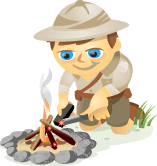More and more businesses are using gamification to create brand awareness and drive user engagement.
Gartner, Inc. predicts that more than 70% of Global 2000 organizations will have at least one gamified application by 2014.
In the last few years, we've also seen an increase in the number of companies that deliver gamification services and solutions including Bunchball, BigDoor Media, Badgeville and Gigya.
“Gamification typically involves applying game design thinking to non-game applications to make them more fun and engaging.” (From Gamification Wiki)
What follows is an A-Z guide of 26 elements you should be aware of when you consider a gamification marketing strategy for your business.
#1: Achievers (Bartle's Types)
Understanding the ways in which people may interact with a game can be essential information for designers. Many discussions of gamification include references to Richard Bartle‘s four player types: Achievers, Explorers, Killers and Socialites.
Nicoholas Yee does a nice job of summarizing Bartle's types. Achievers, he says,
“Are driven by in-game goals, usually some form of points gathering—whether experience points, levels or money.”
(Note: The other three types will be discussed below in #5 Explorers, #11 Killers and #19 Socialites.)
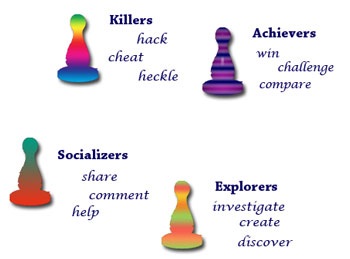
#2: Badges as a Reward
Kevin Warhus writes,
“Since the dawn of Foursquare and a variety of other social check-ins, rewards and badges have become all the rage… Companies big and small have long ago realized that it is a great way to connect with customers and reward them for the use of their service… people naturally enjoy being praised for their actions and collecting proof of their invested time and energy to show off to their friends.”
Think about it: What badges have you earned via social games? Why have they mattered to you?
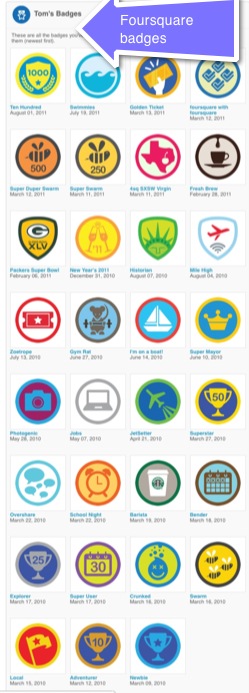
#3: Challenges
A recent gamification study conducted by Stephanie Hermann found that game challenges must be tailor-made to address desired target groups.
Get World-Class Marketing Training — All Year Long!
Are you facing doubt, uncertainty, or overwhelm? The Social Media Marketing Society can help.
Each month, you’ll receive training from trusted marketing experts, covering everything from AI to organic social marketing. When you join, you’ll also get immediate access to:
- A library of 100+ marketing trainings
- A community of like-minded marketers
- Monthly online community meetups
- Relevant news and trends updates
“One must consider the context of the underlying application and the user's state within the player life cycle to sustain user engagement.”
Furthermore, her research suggests that challenges within gamified applications cannot be generalized and no one-size-fits-all exists. The challenge setup must be tailor-made depending on the context and the target audience and should involve diverse challenges.
#4: Demographics
An important consideration for businesses as they think about integrating games into their brand experiences is to know the demographics of gamers.
Statistics from the 2011 Los Angeles Games Conference revealed that:
“50% of gamers are reported as being female, 30% are over 45, and in the U.S. there are 40 million active social gamers (who play at least 1 hour a week), and there are over 200 million gamers on Facebook.”
#5: Explorers (Bartle's Type)
Nicholas Yee describes Explorers as being:
“Driven to find out as much as they can about the virtual construct—including mapping its geography and understanding the game mechanics.”
#6: Flow Theory
Flow theory was proposed by Mihály Csíkszentmihályi, a Hungarian psychology professor who says that in flow, the emotions are not just contained and channeled, but positive, energized and aligned with the task at hand. Flow is also described as a deep focus on nothing but the activity—not even oneself or one's emotions.
Csíkszentmihályi identifies ten factors of flow.
- Clear goals
- A high degree of concentration
- A loss of the feeling of self-consciousness
- Distorted sense of time, one's subjective experience of time is altered
- Direct and immediate feedback
- Balance between ability level and challenge
- A sense of personal control over the situation or activity
- The activity is intrinsically rewarding
- A lack of awareness of bodily needs
- Absorption into the activity
(Note: Not all ten need to be experienced for flow to exist.)
#7: Gifts (Game Mechanics)
Gifts are one of several types of mechanics used in games to motivate users. While some games may utilize real-world gifts in the form of money, gift cards, etc., many games motivate players with virtual gifts; e.g., flowers, badges.
#8: Having Fun Is Okay
Mario Herger says that in his work in the field of gamification he has come up against many negative responses to businesses “gamifying” a user's experience. He says one common argument he hears is:
“We are doing serious business and don't have time for fun at work.”
Mario suggests that you can counter that comment by asking why the person considers fun and serious work to be mutually exclusive. As he says,
“World of Warcraft players created the second-largest Wiki after Wikipedia. Children understand the world through play and fun.”
Do fun and work need to be mutually exclusive for your business?
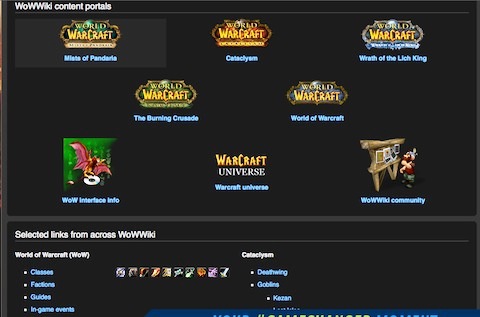
#9: Incentivizing Online Activities
Perhaps one of the essentials of gamified applications and websites is incentivization, where companies incentivize certain activities and then award credits and gifts for desired behaviors.
As discussed in demographics, to know about your users may give you good ideas for how to best incentivize their activities, help keep them in the game and make them loyal customers.
#10: Just So You Know
Sometimes these kinds of things matter to people, so just in case it does to you, “Gamification” was added to the Oxford Dictionary 2011 Word of the Year Short List!
Suffice it to say, you'll be seeing the word around more and more.
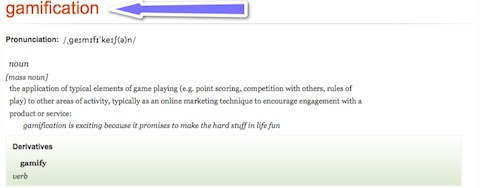
#11: Killers (Bartle's Type)
According to Nicholas Yee,
“Killers use the virtual construct to cause distress on other players, and gain satisfaction from inflicting anxiety and pain on others.”
#12: Leaderboards
Leaderboards are one of the major features of games. They are defined on the Gamification Wiki as:
“A means by which users can track their performance subjective to others. Leaderboards visually display where a user stands in regards to other users. They are implemented on sites to show which players have unlocked the most achievements. The desire to appear on the Leaderboards drives players to earn more achievements, in turn fueling deep engagement.”
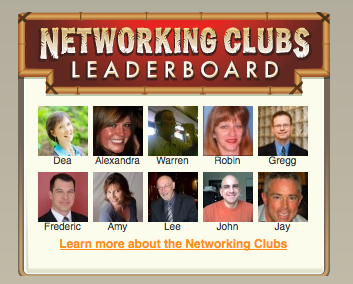
#13: Motivational Design
It's essential to consider what motivates players when you think about creating an effective and successful design for a game.
Gabe Zichermann writes,
“Good gamification design seeks to understand and align an organization's objectives with a player's intrinsic motivation (an innate drive to do something, or your pursuit of activities that are rewarding in and of themselves). Then, through the use of extrinsic rewards and intrinsically satisfying design, move the player through their journey of mastery. This journey requires elements such as desire, incentive, challenge, reward and feedback to create engagement.”
#14: Not the Opposite of Work
Dr. Stuart Brown states in his TED talk, “Play is not the opposite of work.” Instead, think of play as being at the root of gamification and when done well, people can engage in playful activities and still do business at the same time.
#15: Organizational Goals
We've already discussed game design from several perspectives, but as Jeroen van Bree suggests, games should appeal on three levels: personal, organizational and societal.
From the organizational standpoint, games should contribute to an organization's goals; e.g., getting foot traffic into a brick-and-mortar store, demonstrating the personality of your brand and demonstrating your core values.
Thinking about the organizational goals of your game will make it a win-win for everyone involved.

Discover Proven Marketing Strategies and Tips
Want to go even deeper with your marketing? Check out the Social Media Marketing Podcast! Publishing weekly since 2012, the Social Media Marketing Podcast helps you navigate the constantly changing marketing jungle, with expert interviews from marketing pros.
But don’t let the name fool you. This show is about a lot more than just social media marketing. With over 600 episodes and millions of downloads each year, this show has been a trusted source for marketers for well over a decade.
#16: Progress Bar (Game Mechanics)
Believe it or not, the profile completeness bar on LinkedIn can be seen as an example of game mechanics. By seeing how much more complete the profile needs to be, many people will be driven to take steps to 100% completion with the promise of being able to take advantage of LinkedIn's more advanced features.
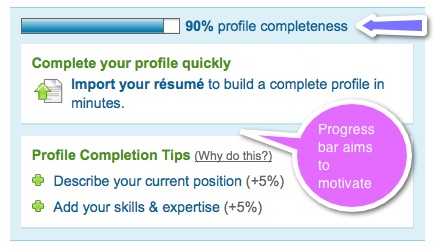
#17: Quantifiable Outcomes
We've established by now that a game can be both fun and serious business for an organization while adhering to organizational goals. But like any other strategy or tactic you might employ, you'll also want to figure out ways to quantify the outcome.
Through gamification analytics you'll want to track things such as user participation, daily activities and users by achievement and levels. And ultimately, you'll want to know if you have impacted the consumer's relationship to your business in a positive way.

#18: Rewards
Kris Duggan has some important insights into rewards. He writes,
“Status and virtual rewards are only as valuable as the community in which they are awarded and displayed. Smart gamification requires a deep integration of a rewards program across a brand's entire user experience, whether that be on its main homepage, mobile app, community, blog or any other digital touchpoint with the brand.”
Make your community a valuable user experience where users will be proud to participate and as a result will be more inclined to value your rewards.
#19: Socialites (Bartle's Type)
According to Nicholas Yee, Socialites, or Socializers as he calls them,
“Use the virtual construct to converse and role-play with their fellow gamers.”
Now that we've explored all four player types, are you curious about what kind of gamer you'd be?
Bartle's paper led to the development of the Bartle Test of Gamer Psychology, a 30-question test designed to characterize the behavior preferences of gamers. You can take the test at GamerDNA.

#20: Tactics and Gamification
So how do we go about understanding tactics and gamification and the ways it will help businesses promote themselves?
Identitymine‘s recent post sums it up nicely with the following statement:
“Marketing tactics within gamification are the incentives that drive the audience to move towards your strategic goal, which can be to create awareness, make sales or identify new leads. The point is not to make a game but to incorporate game mechanics into a marketing effort.”
In other words, not a game for the sake of playing a game but making sure you're always cognizant of the reasons you've employed games—namely for brand awareness, to identify and generate leads and make sales.
#21: Users' Needs and Goals
Dustin DiTommaso discusses a number of questions to help businesses as they set out to research the games for their users:
Who are your users?
- What are their needs and goals? Why are they playing?
- What's holding them back from achieving their potential? Is it lack of volition (belief that completing the task at hand is valuable) or lack of faculty (ability to complete the task)?
- What is their primary playing style (solo, competitive, cooperative)?
- Who are they playing with?
- What social actions do they find enjoyable, and why?
- What metrics do they care about?
There are a number of motivational drivers and DiTommaso recommends you simplify to four key factors. Decide if your users are motivated by:
- Achievement of goals or enjoyment of experience
- Structure and guidance or freedom to explore
- Control of others or connecting with others
- Self-interest in actions or social interest in actions
Have you created a game for your business? How did you get to know your users?
#22: Virtual Environments and Engagement
As Kristen Bourgault points out, games like FarmVille and World of Warcraft have millions upon millions of players each month. She asks:
“What is it that attracts so many people to become so deeply engaged in these virtual environments?”
Maybe it has something to do with the human need to play? A way to try to master our worlds and our experiences? Or maybe it's about our desire for distraction or our need to find a way to relax from the usual demands of our day?
Whatever the reasons are, it's clear that game designers and businesses are using the virtual environment to their advantage and capitalizing on users' engagement.
Will you gamify any parts of your business?

#23: Website Invigoration
Douglas MacMillan says that gamification has been invigorating stale websites and turning them into video games.
“Video game designers have spent the last few decades perfecting the art of making their products addictive. Now traditional companies are building loyalty for their websites using so-called gamification techniques. Tactics such as leaderboards, which encourage users to compete against one another for points, are becoming common across the Web.”
#24: (E)xamples
Tom Edwards lists examples of 15 brands using gamification and the specific mechanisms they use to engage users:
- Xbox Live—achievements, leaderboards
- Foursquare—badges, rewards
- Gowalla—badges, pins
- GetGlue—rewards
- LinkedIn—progress bar
- SalesForce—leaderboard, achievements, leveling
- Mint—achievements, progress bar
- CheckPoints—virtual currency, rewards
- ShopKick—virtual currency, rewards, contests
- Hallmark—Facebook credits, virtual goods, gifting, sharing
- Starbucks—leveling, rewards
- Nike—achievements, badges, challenges, rewards
- Buffalo Wild Wings—trivia, challenges
- Microsoft—achievements, contests
- American Airlines—progress bar
And here's an example I'll add that many Social Media Examiner readers may recognize—Social Media Examiner's Networking Clubs—leaderboard, points, and badges.
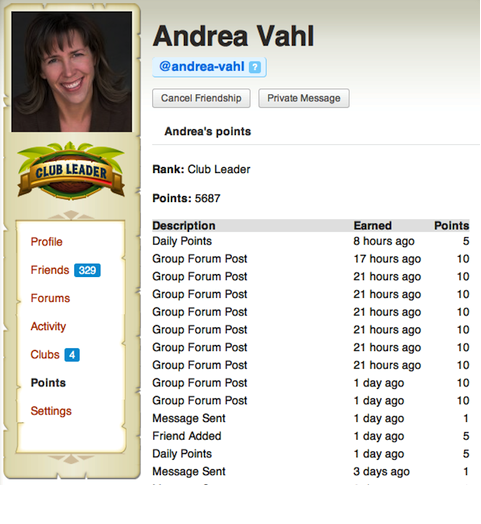
As you move around your day and week, notice the places where businesses are using games; e.g., local coffee shop, supermarket, gas station, electronics stores and online merchants. You may be surprised!
#25: (Wh)y Do You Want to Gamify?
Dustin DiTommaso recommends you ask a series of questions:
- What is the reason for gamifying your product or service?
- How does it benefit the user?
- Will they enjoy it?
“If you can answer these questions with confidence, if gamification seems like a good fit for your business' product or service and if the users enjoy it, then move on to exploring your business goals.”
DiTommaso also recommends you explore the following three questions:
- What are your business goals?
- How do get the users to fulfill those business goals?
- What actions do you want users to take?
The more information you have, the better the chance you'll have at designing an effective and relevant gaming experience.
#26: Zeitgeist at the Appropriate Time
Whether you love the term or concepts of “gamification” or not, it's clear that in a few short years, it has caught on.
As Gabe Zichermann writes,
“The term has entered the popular lexicon… as with most powerful tech neologisms, it's probably not going anywhere, and no small part of its success is that it genuinely is the first viable term to encapsulate the concept of using game concepts outside of games. It has also hit the zeitgeist at the appropriate time.”
What do you think? What experiences have you had with game-based marketing either personally or as part of your business? Please leave your questions and comments in the box below.
Attention Agency Owners, Brand Marketers, and Consultants

Introducing the Marketing Agency Show–our newest podcast designed to explore the struggles of agency marketers.
Join show host and agency owner, Brooke Sellas, as she interviews agency marketers and digs deep into their biggest challenges. Explore topics like navigating rough economic times, leveraging AI, service diversification, client acquisition, and much more.
Just pull up your favorite podcast app, search for Marketing Agency Show and start listening. Or click the button below for more information.
